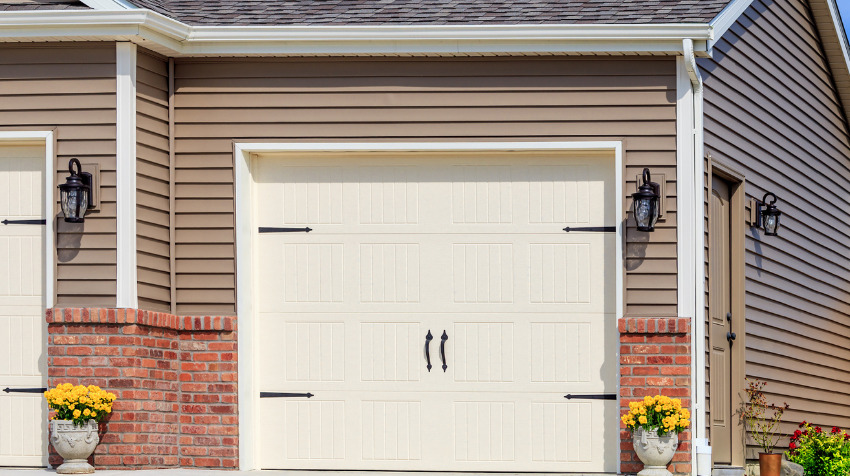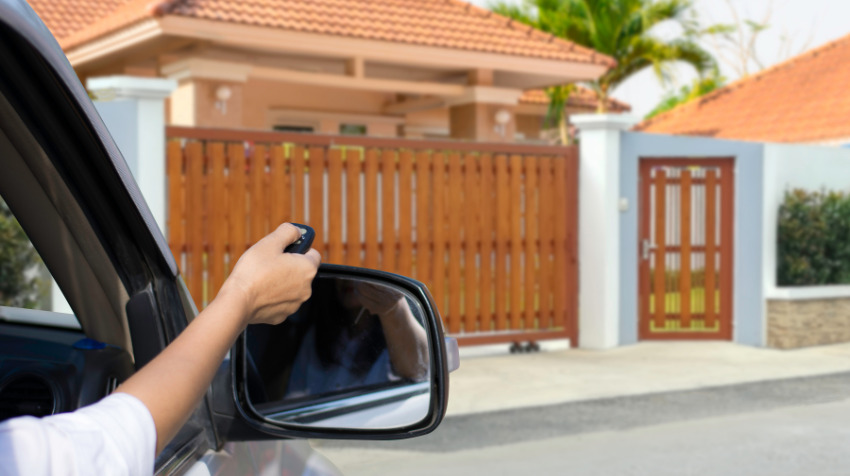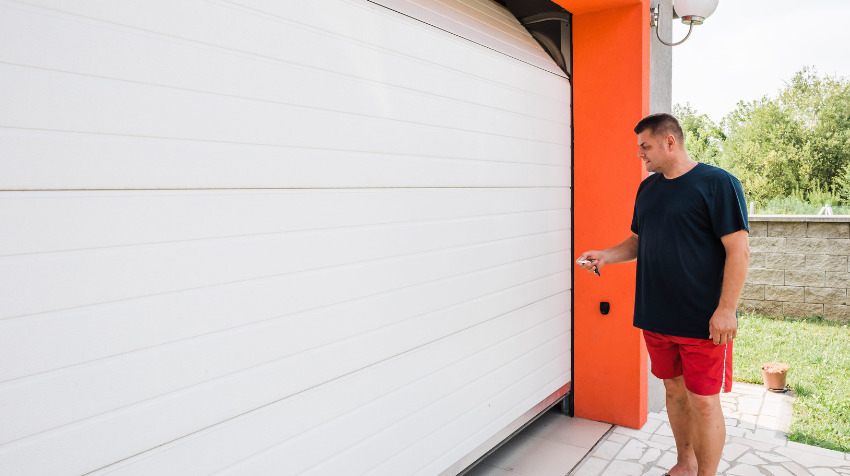Understanding the Benefits of Insulating Your Garage Door
Insulating your garage door can provide numerous benefits for your home. One of the most significant advantages is improved energy efficiency. Without insulation, your garage can become a heat trap in the summer and a cold zone in the winter. By installing insulation, you can regulate the temperatures in your garage and reduce the amount of energy needed to heat or cool your home.
When it comes to insulation products, there are several options available. One popular choice is a garage door insulation kit, which typically includes polystyrene panels that can be cut to fit your garage door. These panels can provide an R-Value of up to 8, which can significantly improve the energy efficiency of your garage.
Installation of garage door insulation is a relatively simple process that can be done by most homeowners. The process involves attaching the insulation panels to the inside of your garage door using adhesive or double-sided tape. Adding an extra layer of insulation to your garage door can help to reduce noise pollution and improve the overall comfort of your home.
Factors to Consider Before Insulating Your Garage Door
When considering insulating your garage door, there are several factors to keep in mind. First and foremost, you need to determine whether your garage door is insulated or not. An uninsulated garage door can lead to significant heat loss, especially in colder climates, and can also allow for air leakage. This can result in higher energy costs and a less comfortable garage space.
Another important factor to consider is the type of insulation material you want to use. There are several types of insulation available, including reflective foil, extruded polystyrene, and garage door panels. Each type has its own benefits and drawbacks, so it’s important to do your research and choose the one that best fits your needs.
The weight of the insulation is also an important consideration. Adding insulation to your garage door can increase its weight, which can put additional strain on the garage door opener and other components. Make sure to check the weight rating of your garage door opener and ensure that it can handle the added weight before proceeding with insulation. Additionally, some types of insulation may require cutting with a utility knife, which can be difficult and time-consuming.
Insulating your garage door can have a significant impact on the thermal efficiency of your garage space, especially in hot climates. It can help to reduce heat flow and radiant heat, resulting in a more comfortable space and lower energy costs. However, it’s important to keep in mind that not all insulated garage doors are created equal. Make sure to choose a high-quality door with a good warranty to ensure that it will provide the desired benefits for years to come.
How To Insulate Your Garage Door video
Types of Insulation Materials for Garage Doors
Insulating your garage door is an effective way to reduce heat loss and save on cooling costs. There are different types of insulation materials available in the market, including reflective foil, extruded polystyrene, and garage door insulation panels. The type of insulation you choose will depend on the type of garage door you have, the size of your garage, and the level of insulation you need.
Reflective foil is a common type of insulation material used for garage doors. It works by reflecting radiant heat energy away from the garage door panels, reducing the transmission of heat into the garage. Extruded polystyrene is another popular option, known for its high R-value and ease of installation. Garage door insulation panels are also available, which can be attached to the garage door panels to provide additional insulation.
When choosing a type of insulation material for your garage door, it’s important to consider the calculated door section R-value, which measures the resistance to heat flow. This value will help you determine the level of insulation you need to effectively reduce heat transfer. Additionally, it’s important to check with your garage door manufacturer to ensure that the insulation material you choose is compatible with your garage door opener and won’t void your warranty.
Insulating your garage door can help you save on cooling costs and reduce the impact of extreme heat on your garage and home. By choosing the right type of insulation material and ensuring proper installation, you can enjoy the benefits of an insulated garage without compromising on style or functionality.
How to Measure Your Garage Door for Insulation
When it comes to insulating your garage door, the first step is to measure it accurately. This is important because the amount of insulation you need will depend on the size and type of your garage door. Common types of garage doors include standard, wide, double car, and detached garage doors. You should also consider the design and condition of your garage door, as well as any extreme weather conditions in your area.
To measure your garage door for insulation, start by calculating the door section R-value. This is a measure of the thermal resistance of the door and will help you determine the amount of insulation you need. You can find this value on the garage door manufacturers’ website or by contacting a professional installer. Next, measure the width and height of your garage door, as well as the thickness of the door panels. This will help you determine the amount of insulation material you need.
When choosing a garage door insulation material, consider factors such as ease of installation, weight issues, and efficiency. Some popular options include rolls of fiberglass or plant fiber insulation, as well as garage door insulation panels made from Bubble Reflective or bubble wrap. These materials can help reduce the transmission of heat and radiant heat energy, which can help lower your cooling costs in the summer and keep your garage warmer in the winter. Additionally, insulated garage doors can help reduce noise pollution and air infiltration, which can further improve the utility and efficiency of your garage and home.
Steps to Prepare Your Garage Door for Insulation
Preparing your standard garage door for insulation is an important step in improving the energy efficiency of your home. Before you begin, consider the type of garage door you have. Different types of garage doors require different types of insulation materials and installation methods. If you have a wide garage door, you may need to purchase insulation panels that are specifically designed for this size.
To determine the appropriate insulation for your garage door, you will need to calculate the door section R-value. This value measures the thermal resistance of the door and helps to determine the insulation’s effectiveness in reducing heat transfer. If you live in an area with extreme heat or cold temperatures, you may need to consider a higher R-value to ensure maximum efficiency.
When preparing your garage door for insulation, it is important to consider weight issues and ease of installation. Some insulation materials, such as rigid foam or plant fiber, can add significant weight to your garage door. Additionally, some insulation panels may require professional installation, while others can be easily installed by homeowners. Consider your budget, climate, and design preferences when choosing the best insulation for your garage door.
DIY vs Professional Garage Door Insulation: Which is Better?
When it comes to insulating your garage door, you have two options: DIY or professional installation. DIY insulation can be a cost-effective solution, but it requires some knowledge and skill. One of the weight issues with DIY insulation is that the insulation material can be heavy, making it difficult to install. However, if you have moderate climate conditions, Bubble Reflective or bubble wrap insulation rolls can be a good utility for your garage door. On the other hand, if you live in an area with extreme weather conditions, it’s best to hire a professional to ensure that your garage door is properly insulated.
Professional garage door insulation can be more expensive, but it offers several benefits. A professional installer can help you choose the right insulation panel for your garage door design and condition. They can also ensure that the insulation is installed correctly, with no air infiltration or convective heat flow. This can help you save on your utility bills and make your garage warm and energy efficient. Additionally, professional installers can provide you with a warranty for their work, giving you peace of mind.
Whether you choose DIY or professional garage door insulation, it’s important to choose the right insulation material for your needs. Some popular options include rigid foam, plant fiber, and reflective material. The R-value of the insulation is also important, with higher R-values providing better thermal resistance. Ultimately, the decision between DIY and professional installation will depend on your budget, skill level, and the area’s R-value requirements.

Common Mistakes to Avoid When Insulating Your Garage Door
When insulating your garage door, there are several common mistakes that you should avoid. One of the most significant mistakes is failing to consider extreme weather conditions. If you live in an area with harsh winters or hot summers, you need to choose insulation materials that can withstand these conditions. Additionally, you should ensure that your insulation has a thermal break to prevent energy loss and air infiltration.
Another mistake to avoid is using too few layers of insulation. While some insulation is better than none, adding multiple layers of insulation can significantly improve your garage’s thermal resistance. You can choose from a variety of insulation materials, including plant fiber, rigid foam, and reflective material. Some insulation panels even use recycled or organic materials, making them an eco-friendly option.
Finally, it’s essential to properly seal your garage door to prevent air leaks. Even the most energy-efficient garage door won’t be effective if there are gaps or seams that allow air to escape. You can use products like garage door weather seal or bottom seals like BOWSEN Garage Door Bottom Seal or Clopay Garage Door Bottom Seal to seal the gaps. Proper garage door foam insulation can also help keep your garage warm and reduce energy bills. A1 Garage Door Service offers a variety of insulation products, including the Matador Garage Door Insulation Kit and Owens Corning Garage Door Insulation Kit, to help you make your garage more energy-efficient.
How to Install Insulation on Your Garage Door
Installing insulation on your garage door is a simple process that can help you save money on your energy bills. There are several types of insulation materials available, including rigid foam, foam core, and rigid panels. Before you begin the installation process, it’s important to measure your garage door and choose the right insulation material for your needs.
To install garage door foam insulation, start by preparing your garage door by cleaning it thoroughly and removing any debris. Next, cut the insulation material to fit the size of your garage door and attach it to the door using an installation kit. Be sure to follow the manufacturer’s instructions carefully to ensure a proper installation.
Once your garage door is insulated, you’ll notice a significant improvement in its energy efficiency. Insulated garage doors can help keep your garage warm in the winter and cool in the summer, reducing energy loss and lowering your energy bills. Additionally, insulated garage doors can help reduce noise pollution and improve climate control in your garage, making it a more comfortable and attractive space.
Tips for Maintaining Your Insulated Garage Door
Maintaining your insulated garage door is crucial to keep your garage warm and energy-efficient. Proper garage door maintenance can also extend the lifespan of your garage door and prevent costly repairs. A1 Garage Door Service recommends inspecting your garage door weather seal regularly to ensure it is in good condition. If you notice any damage or wear, replace it with a high-quality seal like the BOWSEN Garage Door Bottom Seal or the BTJX Universal Seal Seal Waterproof Door Garage Rubber Strip Garage Door Replacement Tools & Home.
Another important aspect of maintaining your insulated garage door is checking for gaps or cracks in the garage door seams and walls. Use a sealant or insulation product like the Clopay Garage Door Bottom Seal or the Frost King Garage Door Top & Side Weatherseal to seal any gaps and prevent convective heat flow. If you have a non-insulated garage door, consider upgrading to an insulated garage door like the Matador Garage Door Insulation Kit or the Owens Corning Garage Door Insulation Kit to prevent damaging heat from entering your garage.
When installing insulation on your garage door, make sure to follow the manufacturer’s installation instructions carefully. Most insulation products come with a simple installation kit and can be installed in a few hours. Some popular insulation products include the Tech Reflective Foam Core Garage Door Insulation and the Universal Garage Door Seal Garage Door Rubber Seal Strip. Consider the area’s R-value and the insulation product’s design flexibility when choosing the right insulation for your garage door. The 6.0 R-Value, 20 R-Value, and 6.56 R-Value are some of the most popular insulation products available in the market with a 4.8-star rating and 3,866 5-Star rating.
Proper maintenance of your insulated garage door can help you save energy and reduce noise pollution. It can also increase your home’s value and provide an attractive garage. With minimal weight and additional weight, insulation products like the 1-3/8″ polystyrene, 1-5/16″ vinyl backed polystyrene insulation, and 5/32-Inch insulation layers can provide a broad temperature spectrum and withstand afternoon temperature. Some insulation products come with a 2-year warranty, while others come with a 20-year warranty.
How Insulated Garage Doors Can Help You Save Energy
Insulated garage doors can help you save energy by reducing the amount of heat that escapes from your residential garage. A non-insulated garage door can have an R-value of only 4.5, while an insulated garage door can have an R-value of up to 20. This means that an insulated garage door can prevent convective heat flow and damaging heat from entering your garage, which can help keep your home cooler in the summer and warmer in the winter.
There are many types of insulation materials available for garage doors, including polystyrene insulation, vinyl-backed polystyrene insulation, and reflective foam core insulation. The Matador Garage Door Insulation Kit, Owens Corning Garage Door Insulation Kit, and Tech Reflective Foam Core Garage Door Insulation are all popular insulation products that can help you save energy. Additionally, the Universal Garage Door Seal Garage Door Rubber Seal Strip can help prevent air leaks around your garage door, which can further improve your garage’s energy efficiency.
Installing insulation on your garage door is a simple process that can be completed with an installation kit and installation instructions. The average cost of insulating a 3-car garage is around $500, but cost estimates can vary depending on the area’s R-value and the type of insulation used. With a 4.8-star rating and 3,866 5-star ratings, the Double Bubble insulation product is a popular choice for its design flexibility, broad temperature spectrum, and minimal weight. Plus, it comes with a 2-year warranty or a 20-year warranty for the 4-by-10-foot roll or 9-foot rolls, respectively. By insulating your garage door, you can save energy and reduce your home’s carbon footprint while also enjoying an attractive garage with improved climate control.
| Insulation Type | Energy Efficiency Value (R-Value) | Power Consumption Difference | Heating Cost Difference |
|---|---|---|---|
| Non-Insulated Garage Door | R-0 | — | — |
| Polystyrene Insulated Garage Door | R-4 to R-6 | -15% to -25% | -10% to -20% |
| Polyurethane Insulated Garage Door | R-12 to R-18 | -30% to -45% | -20% to -35% |
The Impact of Insulated Garage Doors on Your Home’s Value
Insulated garage doors can have a significant impact on the value of your home. The insulation helps to regulate the temperature in your garage, which can reduce the amount of damaging heat that enters your home. This can lead to lower energy bills and a more comfortable living environment. Additionally, insulated garage doors can help to reduce noise pollution, which can be a major selling point for potential buyers.
When it comes to insulation products, there are a variety of options available. Some of the most popular types of insulation include polystyrene insulation, vinyl-backed polystyrene insulation, and double bubble insulation. Each of these products has its own R-value, which measures the insulation’s ability to resist convective heat flow. The higher the R-value, the better the insulation.
The installation process for insulated garage doors is relatively simple, and most manufacturers provide installation instructions and an installation kit. The cost of insulation products can vary depending on the area’s R-value, the size of the garage door, and the type of insulation used. However, the average cost for insulation ranges from $100 to $500. With a 4.8-star rating and 3,866 5-star ratings, Featured Products like 1-3/8″ polystyrene insulation – Gallery, 1-5/16″ vinyl-backed polystyrene insulation, and Double Bubble insulation are popular choices for homeowners looking to increase the value of their home. Additionally, many insulation products come with a 2-year or 20-year warranty, providing peace of mind for homeowners.
How Insulated Garage Doors Can Reduce Noise Pollution
Insulated garage doors are not only great for energy efficiency, but they can also help reduce noise pollution. The polystyrene insulation used in many garage door products can absorb sound waves, making it an effective sound barrier. This is especially important if you live in a noisy neighborhood or near a busy street.
Gallery’s 1-3/8″ polystyrene insulation and 1-5/16″ vinyl-backed polystyrene insulation are both great options for reducing noise pollution. The installation process is simple and can be done with an installation kit and instructions. The steel layers and 5/32-inch insulation layers, along with the air space layer, create a barrier that can significantly reduce noise levels.
The average cost of insulated garage doors varies depending on the product types and design flexibility. However, the additional weight of the insulation products is minimal and will not affect the garage door’s operation. Gallery’s Double Bubble insulation has a 4.8-star rating and 3,866 5-star ratings. It comes in 4-by-10-foot rolls or 9-foot rolls and has a 2-year warranty. The 20-year warranty on Gallery’s panel designs ensures that your garage door will continue to reduce noise pollution and maintain a broad temperature spectrum, even in extreme afternoon temperatures.
Insulated Garage Doors and Their Effect on Climate Control
Insulated garage doors can have a significant impact on climate control within your home. The air layer created by the insulation helps to regulate the temperature in your garage, which in turn affects the temperature of the rooms adjacent to it. This air space layer acts as a barrier against the outside temperature, keeping the garage cooler in the summer and warmer in the winter.
The insulation products used in garage doors come in a variety of types and designs, allowing for design flexibility and customization. Featured Products such as Double Bubble and other air space insulation products are popular choices due to their minimal weight and additional weight to the garage door. Cost estimates for these products vary, but the average cost for a 4-by-10-foot roll of insulation is around $100, with 9-foot rolls costing around $50.
When considering insulated garage doors, it’s important to note that they can also help to reduce the amount of energy needed to air condition your home. This is due to the broad temperature spectrum that the insulation provides, which helps to keep the garage and adjacent rooms at a more consistent temperature. Additionally, many insulated garage doors come with a 2-year or 20-year warranty, depending on the product types and panel designs, giving homeowners peace of mind and added value.
How to Choose the Right Insulated Garage Door for Your Home
When choosing the right insulated garage door for your home, it’s important to consider the insulation material. Double Bubble insulation is a popular choice due to its high R-value and design flexibility. It comes in 4-by-10-foot rolls or 9-foot rolls, making it easy to install on any garage door. Additionally, it has a 2-year warranty, giving you peace of mind.
Another factor to consider is the panel design of the garage door. Some panel designs may not be compatible with certain insulation materials, so it’s important to choose a design that works well with your chosen insulation. Additionally, some garage door manufacturers offer a 20-year warranty on their insulated doors, such as those with a 4.8-star rating and 3,866 5-star ratings.
Insulated garage doors can also have an impact on your home’s air conditioning. A well-insulated garage door can help keep the cool air inside during the summer months, reducing the need for excessive air conditioning. This can lead to energy savings and a more comfortable living environment.
Frequently Asked Questions About Garage Door Insulation
Garage door insulation is a great way to improve energy efficiency and regulate temperatures in your garage. It can also help reduce noise pollution and increase the value of your home. But before you invest in a garage door insulation kit, there are a few things you should know.
One important factor to consider is the R-Value of the insulation product. This measures the insulation’s ability to resist heat flow, with higher values indicating better insulation. Polystyrene is a popular material for garage door insulation, with R-Values ranging from 3.5 to 6.5 per inch of thickness.
Installation of garage door insulation can be a DIY project, but it’s important to follow the manufacturer’s instructions carefully. It typically involves attaching the insulation to the inside of the garage door with adhesive or tape, and adding a layer of reflective foil for added energy efficiency. If you’re not comfortable with DIY installation, it’s best to hire a professional to ensure proper installation.




